Textiles in Japan and South Korea
Hi again lovely crafters!
I am back to share the second and latest post about textiles and crafts from our recent trip to South Korea and Japan.
South Korea's Hanbok
I will start with the only pic I thought it would be worth sharing from South Korea (we just spent a couple of days going there and back, so I didn't have the time to dive into the amazing textile world Korea has).
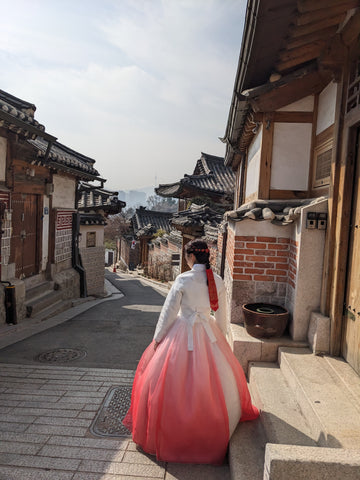
This person is wearing a beautiful, traditional South Korean garment called hanbok. They are not really used anymore and people usually rent them to take pictures or for special ocassions.
The hanbok is made of two main parts. Both men and women wear a jeogori, a sort of jacket. It has long sleeves, a V-shaped neckline and is tied on the right of the body with straps called goreum. Women tend to wear a short jeogori, which they pair with a chima, or high-waisted wraparound skirt.
They also had their hair and make-up done for these photoshoots and it was funny seeing them walking around in this traditional outfit, drinking Starbucks and surrounded by the huge skyscrapers and buildings of Seoul.
Japanese Kimono
Moving onto Japan, you will for sure encounter many friends and couples dressed in traditional kimonos and doing the exact same thing as their neighbours; renting the garments to take pictures for a day and having their make-up and hair done. And what happens if this coincides with the cherry blossom season? That the number of Japanese doing this multiples by 10! :)
Kyoto is the place to go for traditional crafts, textiles and more and it is where as soon as you arrive you see women wearing kimono everywhere... even on the subway. I was totally amazed by this woman wearing a kimono: the colours, the embroidery, the hair!
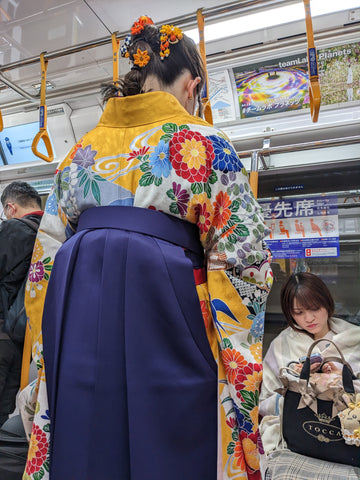
And here you can see a lovely couple who hired a professional photographer to take pictures of them under the cherry blossom, in some of the most beautiful areas of Kyoto (they didn't mind me or others taking pics. They were actually very happy about it! It is always worth and the polite thing to do to ask. You could see posters around the city asking tourists to please not taking pictures of geishas or people working at temples).

Museum of Crafts and Design
In Kyoto, I visited a couple of craft stores and musems that I found worth mentioning. The first is the Museum of Crafts and Design. The entrance is free and even though is a bit small, it contained a lot of information and samples of different Japanese crafts, not only related to textiles.
Here you can take a look at some of the kimonos I saw.

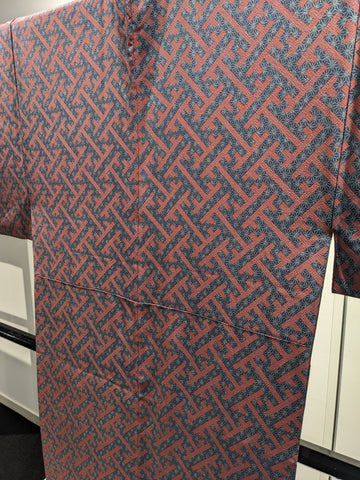
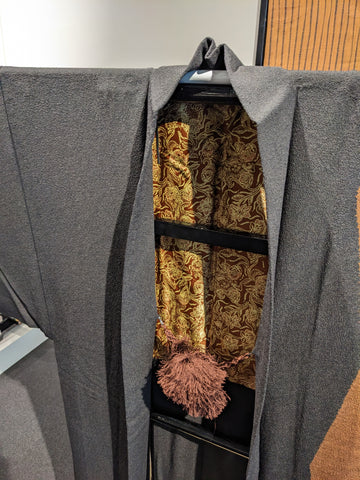
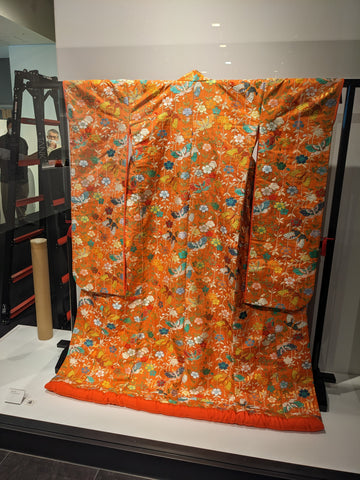
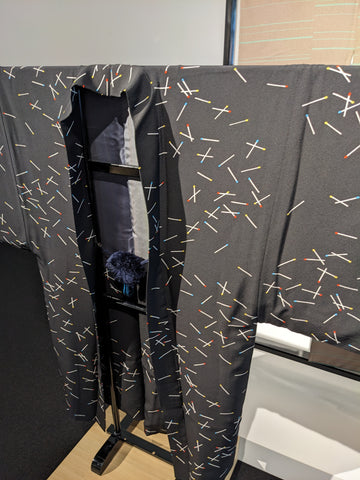
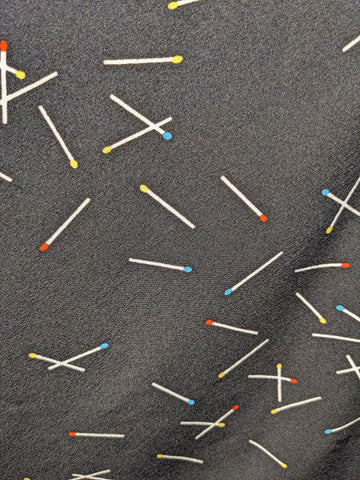
Kyoto Handicraft Center
After this, I visited the Kyoto Handicraft Center that I thought at first it would be a museum / exhibition but it was more like a big shop. In any case, it was nice taking a look. They had many kimonos for sale for women, men and kids, as well as books on themes such as travelling, textiles, caligraphi or origami. I think it was a good place to find a present for someone or get one for yourself.


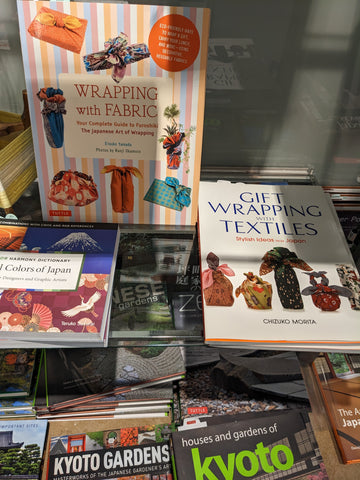
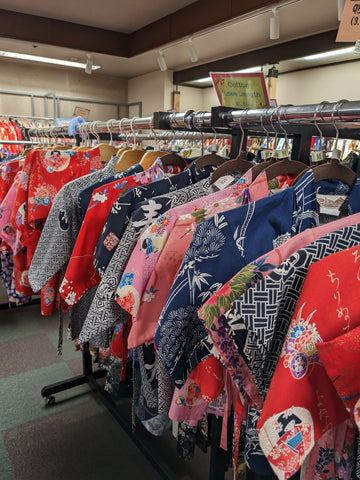

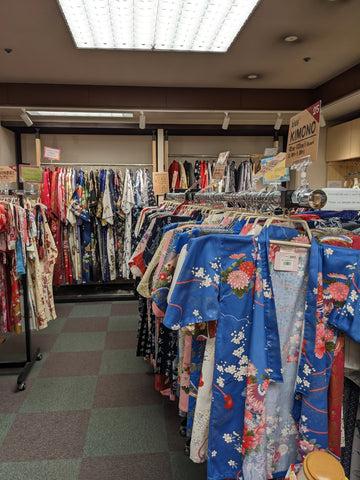
Shibori Museum
The next place I wanted to mention is the Shibori museum, in Kyoto as well (if you are interested in textiles, Kyoto es the place to go). The museum is lead by a couple who also organised workshops. It was quite small but interesting as I didn't know anything about the dying art of shibori.
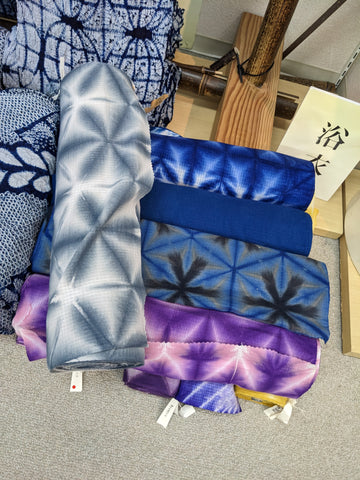
Shibori is a manual resist dyeing technique, which produces different patterns on fabric. In Japan, the earliest known example of cloth dyed with a shibori technique dates from the 8th century.
There are many ways to create shibori, with techniques generally grouped into three categories: kōkechi, tied or bound resists; rōkechi, wax resists; and kyōkechi, resists where the fabric is folded and clamped between two carved wooden blocks (like in the pic below).

The technique chosen and the resulting dyed fabric depends on both the type of fabric and the dye used. It might be used on a kimono or to create a piece of art in itself.

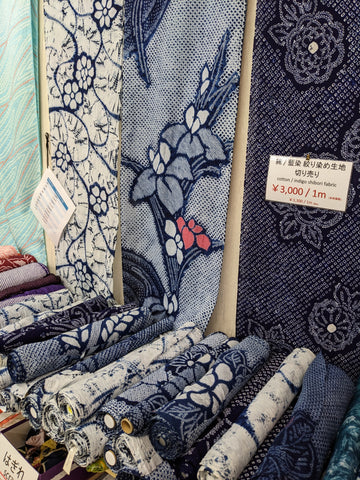
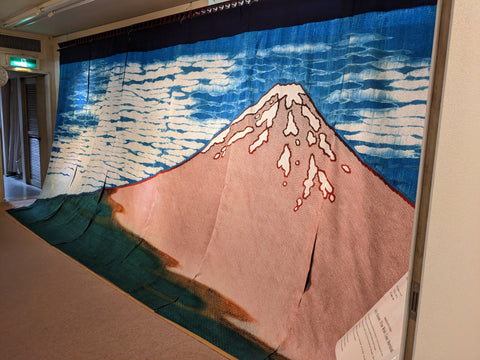
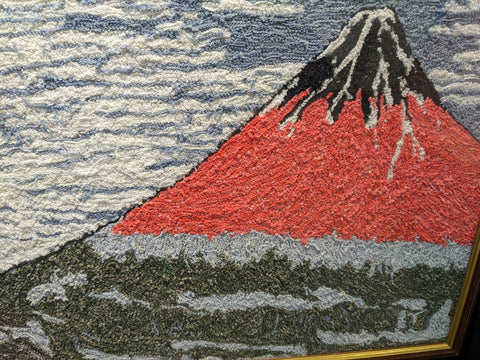
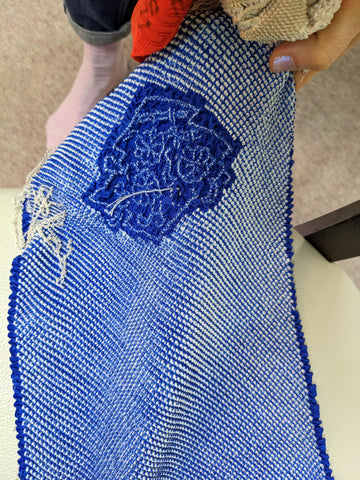


Tokyo Quilt Show
To finish, I wanted to show you some pics of the Tokyo Quilt Show I was lucky enough to attend. I somehow expected it to be a big event but it was pretty small, much smaller than other quilt or craft shows I've visited in the past in Europe.
Even so, it was nice to see some of the quilts in exhibition and take a look at the vendor's stalls. You can take a look below.
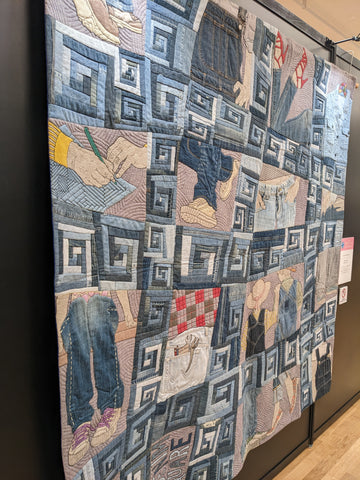
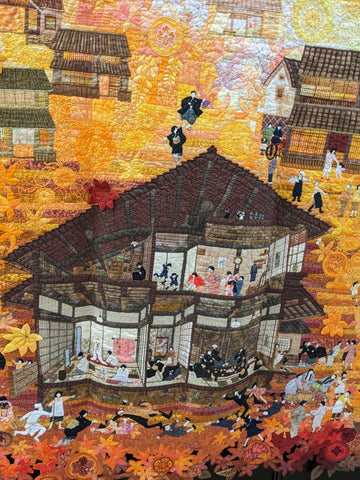



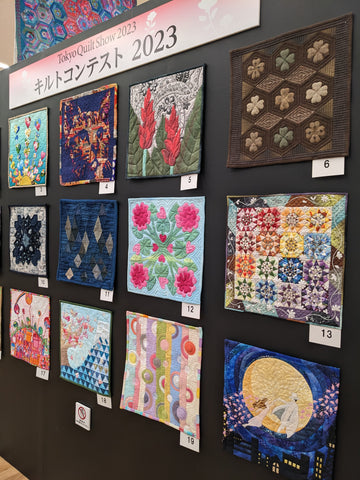
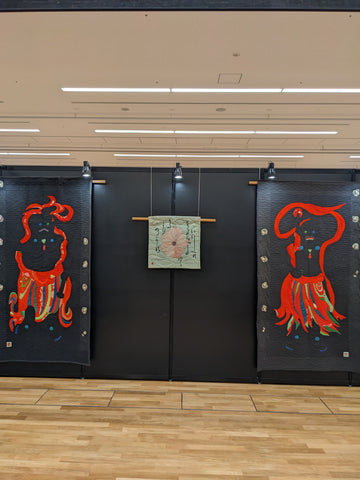
And that's it! I hope you find this second post interesting. Haver you ever been to Japan or South Korea? What did you think about their textiles and traditions?
See you soon and thanks for reading,
Ana
xxx
